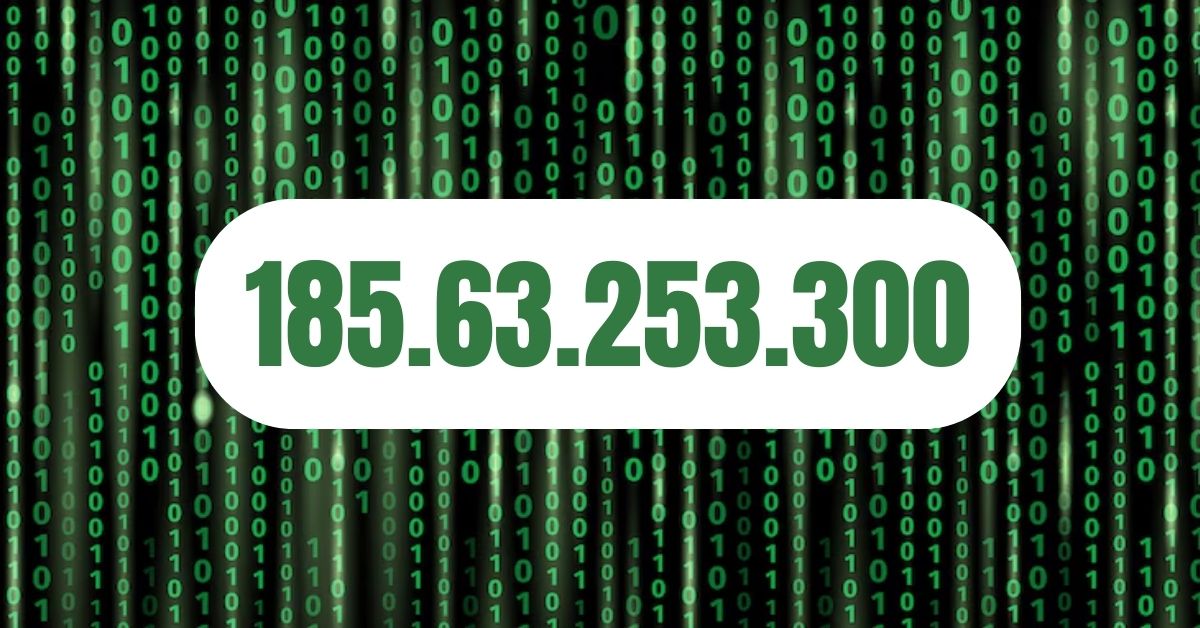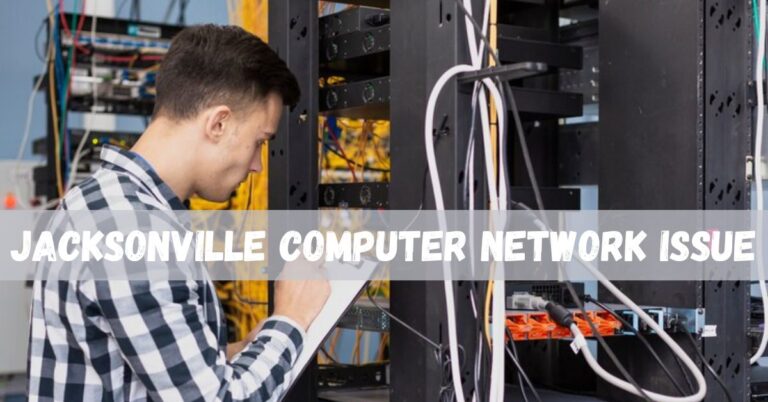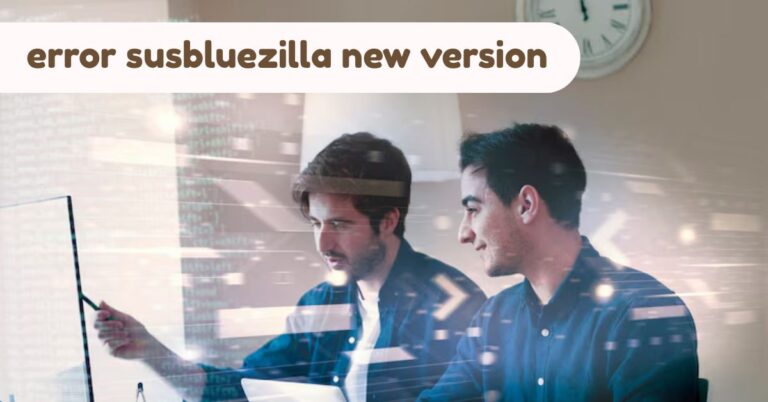Understanding 185.63.253.300 and Its Significance
While to the uninitiated, the string of digits “185.63.253.300” may appear to be nothing more than a string of random numbers, it actually denotes a great deal in the realm of internet and networking. It looks a lot like an IP address, which is the building block of all network communication and data transfer in the digital world. Nevertheless, it is important to go deeper into the intricacies of numerical strings like IP addresses in order to comprehend their operation, networking technologies, and the potential misunderstandings that might emerge from them.
In this post, we’ll take a look at “185.63.253.300,” its possible abuses, its role in the bigger picture of internet communication, and its relevance to the networking environment. Whether you’re an experienced IT expert or just starting to wonder about networking, you’ll have a better understanding of the reasoning behind these kinds of data.
What Is 185.63.253.300?
Looking at it from the outside, “185.63.253.300” seems to be an IPv4 address, the most used format for IP addresses in modern networks. Typically, an IPv4 address will be expressed using dotted decimal notation, which divides the address into four octets separated by dots, and utilises a 32-bit structure. On the other hand, “185.63.253.300” stands out for some reason.
If you’re familiar with IP standards, you’ll see that 300 is greater than the acceptable range of 0-255 for the last octet. The IP address “185.63.253.300” is invalid due to this detail. Next, we need to know how and why this string may exist. The discussion around it helps us better study the structural rules and practical uses of IP addresses, whether it’s due to human mistake, a planned decision for testing in network settings, or an intended example for instructive reasons.
How IP Addresses Like 185.63.253.300 Fit into the Internet
Before you can appreciate the significance of IP addresses and the consequences of incorrect ones, such “185.63.253.300,” you must know why IP numbers are key. An IP address is necessary for any device to communicate with any other device on a private or public network. Imagine it as the online version of a physical address; it points data in the right direction. Due to their simplicity and historical inclusion into early internet design, IPv4 addresses in particular are frequently utilised.
Octets, which can take on values between 0 and 255, make up an IPv4 address. A legitimate IP address could appear like “192.168.1.1.” The reason why every octet stays within its range is because IP systems are created using binary, and with 8 bits of data per octet, the maximum value for those bits is 255. As a result, any octet that goes over this number, such as “300” in “185.63.253.300,” is rendered invalid.
The address “185.63.253.300” cannot be allocated to any device or server due to its invalidity. Networking tools, apps, and systems that rely on correct IP formatting would malfunction if this were to be utilized.
Why Invalid IP Strings Like 185.63.253.300 Are Important
In some instances, “185.63.253.300” is relevant, even if it does not qualify as a functional IP address. To start with, you could see these kinds of statistics on exams and in classrooms when people are learning about formatting standards and how to deal with errors in IT. Using a made-up example like “185.63.253.300” invites students to investigate the significance of correct IP ranges and the solutions to typical networking errors.
In addition, the field of cybersecurity frequently encounters incorrect IP addresses. Those with ill intentions can use incorrect strings like “185.63.253.300” to trick systems or hide the identity of data log sources. Systems with inadequate security or settings with weak IP validation mechanisms can be prone to such behavior. So, keeping a strong and secure network involves identifying and fixing incorrect entries.
IP Addressing Challenges and IPv4 Exhaustion
By delving into “185.63.253.300” we may also explore more general networking concerns, especially as they pertain to the IPv4 protocol suite. The scarcity of available unique IP addresses has caused IPv4 to experience a crisis, despite its extensive use. Back in the 1980s, when IPv4 was first introduced, it looked to have more than enough potential addresses—more than four billion. Yet, IPv4 was overwhelmed by the exponential growth of the internet, particularly with the proliferation of mobile devices, smart gadgets, and IoT items.

Inaccuracies like “185.63.253.300” show how IP-based communication needs better validation procedures and new approaches to make it more useful. One such remedy is IPv6, or Internet Protocol Version 6, which introduced an enhanced 128-bit addressing scheme to overcome IPv4’s shortcomings. An nearly infinite number of unique addresses may be supported by IPv6, unlike IPv4, and the protocol also safeguards against mistakes caused by incorrect values or crossovers, such as in the example of “185.63.253.300.”
Don’t Miss: Exploring the Significance of http://www.arlindmorina.info
The Role of 185.63.253.300 in Network Security
In security talks, the appearance of a string like “185.63.253.300” always leads to fascinating questions. Error reports, log files, or honeypot systems that identify unauthorised actions, especially in poorly built networks, may include entries like “185.63.253.300” even though it is not a real IP address. These examples show how IPs that aren’t valid or have errors can be used to evaluate how well systems can handle odd data.
In order to avoid the abuse of invalid entries, cybersecurity experts have stressed the significance of system monitoring. Businesses could protect their networks against such vulnerabilities by implementing measures like IP filtering and input validation to identify unusual traffic patterns like “185.63.253.300”.
Modern network monitoring software has the ability to detect and report any suspicious behavior or incorrect inputs. Maintaining the integrity of their operations and mitigating hazards linked with unauthorized or malformed IPs may be achieved through diligent monitoring by IT staff.
Potential Misuses of 185.63.253.300
Exploring the potential exploitation of invalid IP sequences like “185.63.253.300” is one topic worth investigating. Malicious traffic sent to cloud services, proxies, or targeted systems has been found to contain addresses that are not legitimate. These strings have the potential to obfuscate badly designed error-handling systems or impede correct routing.
Similarly, in distributed denial-of-service (DDoS) assaults, attackers may use incorrect ranges such as 185.63.253.203. Attackers try to overload systems by delivering badly structured requests or packets, taking advantage of holes in error-checking processes.
The Importance of Validation in Modern Networking
One thing is abundantly evident from strings like “185.63.253.300”: validation is essential for everyone working in IT or managing networks. By excluding abnormal values, erroneous ranges, and potentially dangerous IP addresses, validation procedures guarantee that only correctly formed IP addresses may work inside a system.
Among other things, it should be standard setup for all network devices, such as firewalls and routers, to strictly enforce IP format validation. Integrating technologies to actively reject out-of-range entries like “185.63.253.300” and inform human operators about repeated abnormalities should be a priority whenever possible.
System efficiency is enhanced by validation, which also safeguards against breaches caused by incorrect data inputs. Organizations should implement this technique to effectively control risks and maintain seamless communication in their digital infrastructures.
Conclusion
The fact that an IP address like “185.63.253.300” does not exist shows how important it is to follow protocol standards, implement error checks, and protect against vulnerabilities. The need of accuracy in networking is emphasised by invalid addresses such as this one. Network administrators, IT specialists, and regular internet users may all benefit from a better grasp of inputs and a reduction in expensive mistakes by considering its consequences.
The groundwork for a safe and flexible internet is laid by using rigorous validation procedures, getting systems ready for IPv6 and other next-gen protocols, and knowing how to deal with invalid inputs in testing. Even if “185.63.253.300” will never link a physical device, it will lead us to more in-depth discussions on the infrastructure that ensures our online existence.
Don’t Miss: Unlocking the Potential of speedyshort.com for Your Digital Needs







